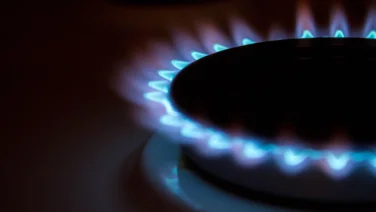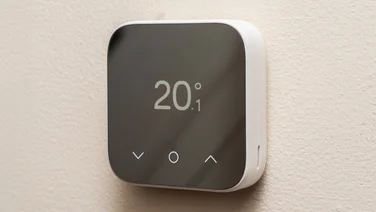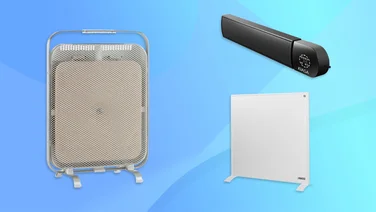To help us provide you with free impartial advice, we may earn a commission if you buy through links on our site. Learn more

Energy bills continue to be high, even though the energy price cap is falling, so it makes sense to explore all your options when heating your home and look into how storage heaters work.
It’s estimated that around 1.7 million households in the UK currently have a storage heater – sometimes called night storage heaters – and they can be a cost-effective way to keep warm if used correctly.
This article will take you through everything you need to know about storage heaters, from their basic operation to how to make the most of yours.
What is a storage heater?
Usually, a storage heater is a type of wall-mounted radiator powered by electricity – historically, this is often because the property is not connected to a gas supply to run a conventional boiler. A storage heater generates heat and collects it – typically overnight when the electricity tariff is more likely to be lower – holding the heat for longer, allowing you to heat your home even while the power is off.
In the past, storage heaters have been huge, clunky units but modern storage heaters increasingly look more like smart radiators.
How do storage heaters work?
Storage heaters use electricity to heat ceramic or clay bricks inside the unit, these bricks then hold the heat and release it gradually to warm your home. Some storage heaters have just one ‘output’ function, while others will feature a ‘boost’ to turn the temperature up further.

Higher tech versions may also have added features such as a digital display, fan assist, thermostatic controls, programmability, and even wi-fi capability.
READ NEXT: How do heat pumps work?
What are the benefits of storage heaters?
Using storage heaters to heat your home can be an economical solution to staying cosy. If you can run your storage heater at a cheaper – or possibly even free – rate and then use the stored heat to warm your home during the more expensive energy periods, you could see a serious drop in your energy bills.
Storage heaters also tend to be inexpensive and relatively easy to install. Often new models only cost around £150, while installation by a qualified electrician should be simple and affordable using your existing wiring.
Finally, storage heaters are typically very quiet and straightforward to use.
READ NEXT: How much energy does a solar panel produce?
What are the disadvantages of storage heaters?
Storage heaters are not always the best choice, particularly if you have an old model, and they are generally only economical if you are on an energy tariff that offers cheaper off-peak rates. So, depending on your tariff, running more standard electric radiators, or using gas central heating with a smart thermostat – assuming you do have access to gas – may be cheaper. You can read more about energy tariffs and how to get the best deals in our guide to the best energy suppliers and check out which providers earned our highest accolades in the Expert Reviews Energy Awards 2024.You should also be aware that using a ‘boost’ function during the day can be costly, as it will be using peak-rate electricity, and it could be better to invest in a fan heater to use as and when a boost is needed.
A storage heater will not be right for everyone’s lifestyle. The most cost-effective way of using a storage heater is to enjoy the stored heat gathered overnight immediately. If you are out of the house most of the day and won’t require heating until the evening then much of the heat will already be lost, meaning you’ll have to find an alternative or use a higher rate of electricity to warm yourself on chilly nights.
With older storage heaters, you also run the risk of them containing asbestos. Especially if your heater pre-dates 1974, do not investigate this yourself; instead, contact the manufacturer or a licensed contractor for safe removal.






